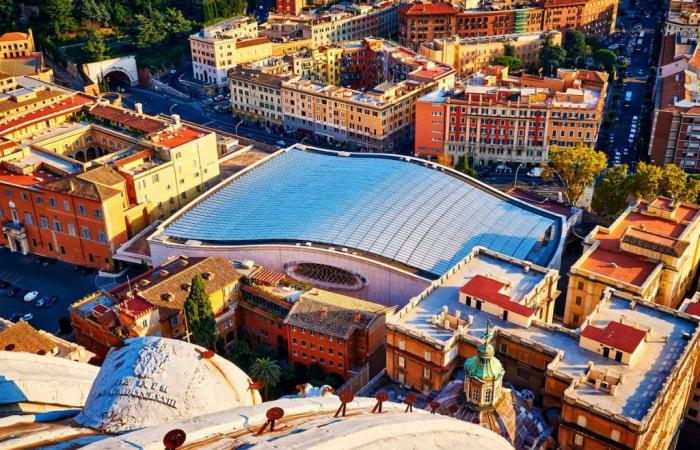The Meloni Government delivered the European Commission on 1 July 2024, in line with the EU deadline, new PNIEC Italyil National Integrated Energy and Climate Plan. The document in its 491 pages revises and updates the text approved in 2019, trying to raise the energy-environmental commitments for the 2030. A necessary reorganisation in light of what is required by the new Community regulations, and in particular by the EU Regulation on Governance but which is not entirely convincing, both in terms of emissions and renewable energy.
To understand in detail the extent of the national commitments poured into the new PNIEC 2024it is necessary to take a few steps back.
What is the PNIEC 2030?
The PNIEC, acronym for “National Integrated Energy and Climate Plan”, It is the instrument requested by the European Union to the Member States to define policies and measures to achieve 4 key objectives for 2030.. These targets are: a reduction in greenhouse gas emissions; a minimum share of renewable energy in consumption (42.5%); an improvement in energy efficiency (with a reduction in EU final energy consumption of 11.7% by 2030, compared to expected energy use); a better development of electricity interconnections.
Established by the EU Regulation 2018/1999, The Plans must cover the period 2021-2030but taking into account the longer-term perspective. What do they necessarily contain? First of all, an overview of the procedure followed to define the PNIEC itself. Then a description of the objectives, targets and national contributions the size of the Energy Union and decarbonisation. Reporting measures and interventions to achieve them.
The work began six years ago. The Twenty-Seven delivered the first drafts at the beginning of 2019 with the aim of being evaluated by the European Commission, adopting the recommendations of the EU Executive and presenting the final text at the end of the same year. But within a short time Community targets on energy and climate, the compass for national paths to 2030, have changedrevising the efforts upwards. Hence the need to rework the Italian PNIEC and that of the other Member States to realign policies, and two new deadlines. That of 30 June 2023, for the delivery to Brussels of the updated draft PNIEC and that of 1st July 2024 for the final text.
PNIEC Italy, the 2030 targets on renewables
On the front of the renewable energies Italy’s Energy and Climate Plan reports a target of 39.4% of gross final energy consumption to be achieved by 2030 (9.4 percentage points more than the 2019 PNIEC). Estimating in detail for that date 43 Mtep to FER out of 110 Mtoe total consumed. For comparison, Italian renewables in 2023 covered approximately 19.9% of final energy consumption.
The objective is further differentiated between the different segments of electricity, heat and transport.
Electricity sector, 2030 target
In the electricity sector, the share of consumption covered by renewable energy sources should reach 63.4% by the end of the decade, driving the entire RES sector. This would mean a renewable electricity production of approximately 237 TWh by 2030, including approximately 10 TWh for the production of green hydrogen.
PNIEC 2030: the new renewable capacity
What does this mean in terms of installed power? The new National Energy and Climate Plan reports a renewable capacity in operation by the end of the decade of 131 GW adding the contribution of wind, photovoltaic, hydroelectric, geothermal and bioenergy. A figure, it is worth underlining, of about 36 GW higher than the PNIEC 2019, but which seems to greatly underestimate the national possibilities. Suffice it to say that of these 131 active GW only 74 GW would be new capacity built in recent years: a value even lower than the development objective included in the Decree on suitable areas (80 GW).
But let’s see in detail the contribution of each renewable source to the 2030 target of the PNIEC Italy.
- For thesolar power the Government has set a total installed capacity of 79.2 GW for the end of the decade, of which 80 MW will be concentrated solar. Excluding the contribution of thermodynamics – which appears to be in sharp decline compared to the text of the old PNIEC – the photovoltaic would grow by 57 GW.
- For thewind power we are talking about 28.1 GW in operation by 2030, of which 2.1 GW of offshore plants. In other words, the segment should install 17 GW of new capacity.
- The contribution of the growshydroelectric and of geothermal compared to the previous Plan, with a target of operating capacity by 2030 of 19.4 GW and 1 GW respectively. The contribution of the bioenergy to the electricity sector with an installed power of 3.2 GW (currently we are over 4 GW).
The text also contains an explicit reference to the innovative technologiesincluding floating wind, floating photovoltaics, agrivoltaics, marine energy and advanced geothermal energy, underlining a target (included in the 131 GW) of over 5 GW of new capacity.
Thermal renewables in the PNIEC Italy 2030
In the thermal sector, the 2030 Energy Climate Plan reports a 35.9% share of thermal renewables on total energy consumption for heating and cooling. In absolute terms, it is expected that consumption from RES in this segment will reach 17,6 Mtepa in the face of an overall demand of 49.1 Mtoe. “It is specified – we read in the text – that RED III leads to identifying for Italy a sector target for 2030 equal to 29.6%, which rises to 39.1% if the indicative increases foreseen are considered […] from the same directive”.
Looking at the details of final consumption, it is evident that the bioenergy are the masters, covering 7.4 Mtep. Environmental energy follows with 5.2 Mtep, the biomethane (3,1 Mtep), the solar thermal (699 ktep), il geothermal (208 ktep) e l’hydrogen (315 ktep). But to achieve the target in the new PNIEC Italy 2024 it also appears “possible” contribution of waste heat recoveryequal to 450 ktep.
PNIEC Italy, targets for renewables in transport
In the transport sector, the share of overall energy consumption for transport covered by renewable sources would be 34.2%. Going into detail about the various contributions, the National Energy and Climate Plan of Italy provides:
- for first-generation biofuels, i.e. single counting ones, an increase in absolute terms from approximately 98 ktoe in 2022 to 977 ktoe in 2030, equal to 2.3% of total transport consumption;
- for advanced biofuels a target of around 11.6%, therefore above the specific target envisaged by RED III (5.5%) for 2030;
- for electricity from renewable sources consumed in the transport sector, the PNIEC Italy 2030 foresees a contribution from electric mobility equal to 0.6 Mtep (2.4 Mtep considering the bonus coefficient of 4), while for rail transport approximately 0.6 Mtep (which multiplied by 1.5 represents approximately 2% of the overall sector consumption).
- for non-biological renewable fuels (RFNBO) the text provides for hydrogen produced from non-biological RES a contribution of at least 2% of total sector consumption, higher than that provided for by RED III.






